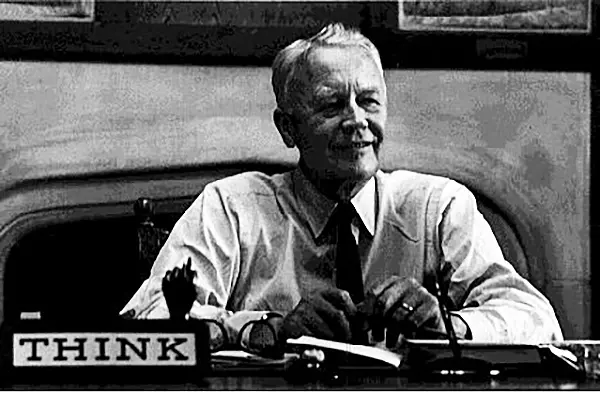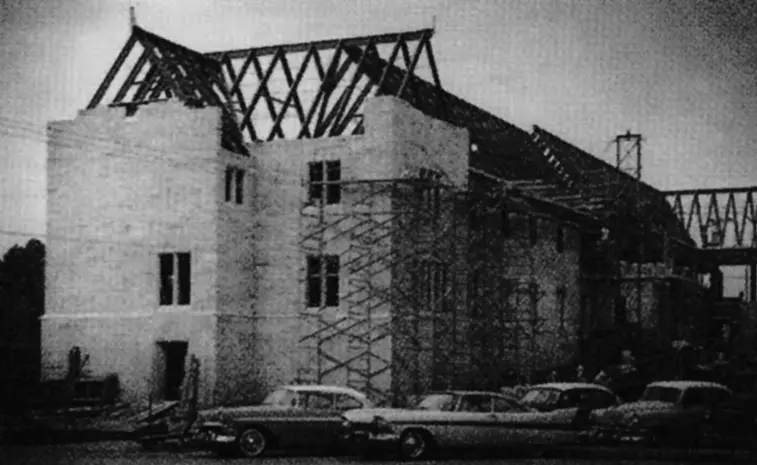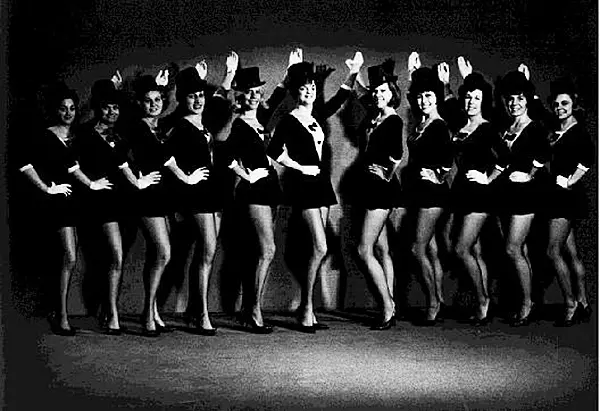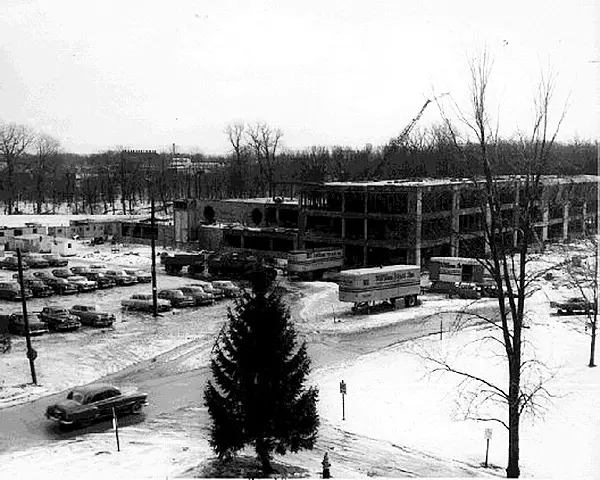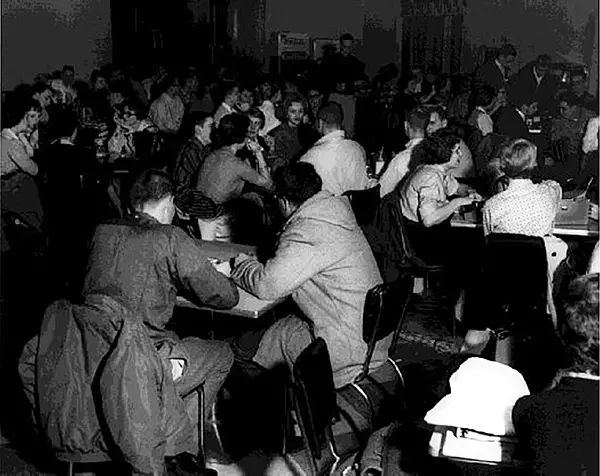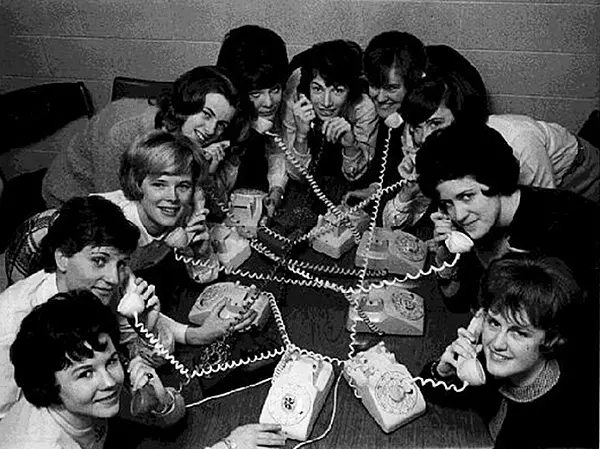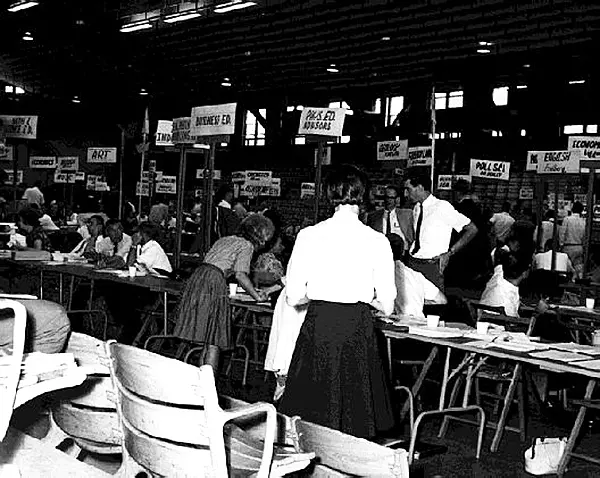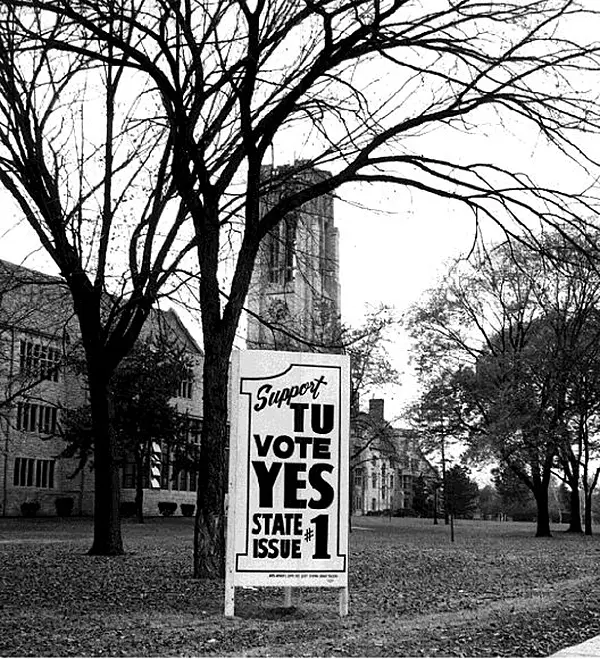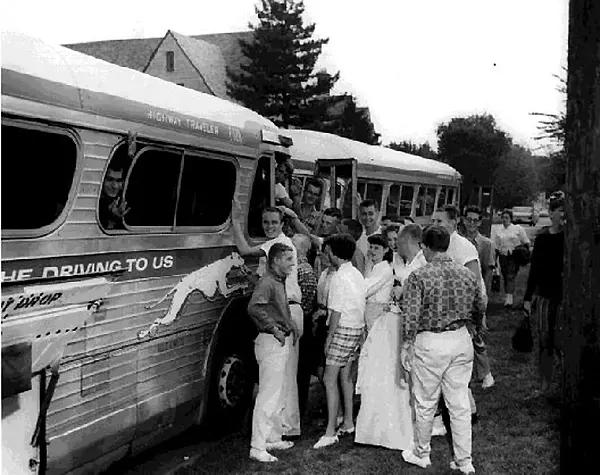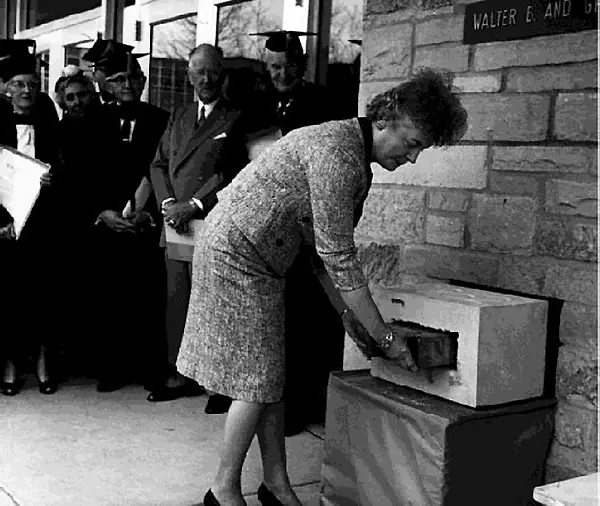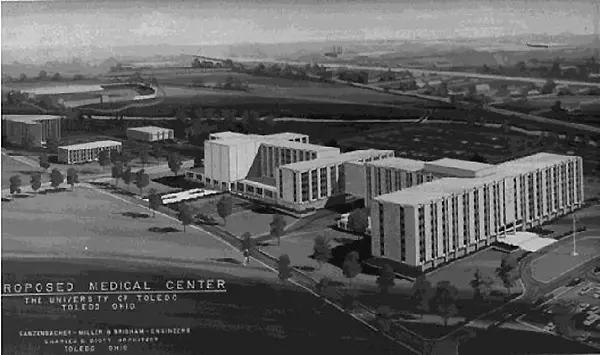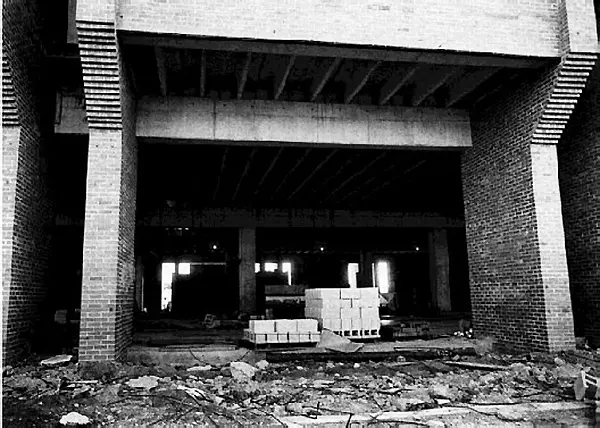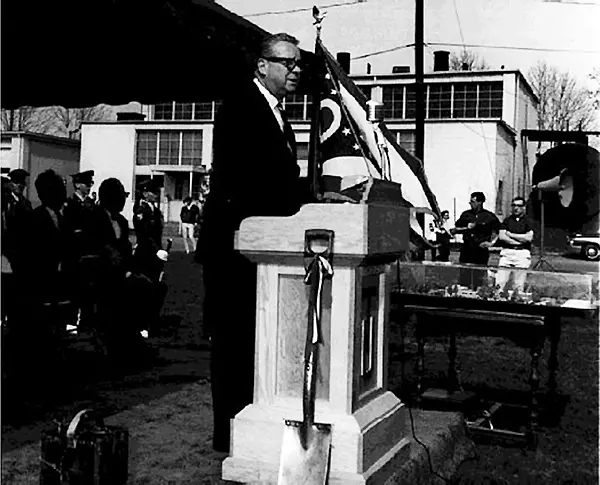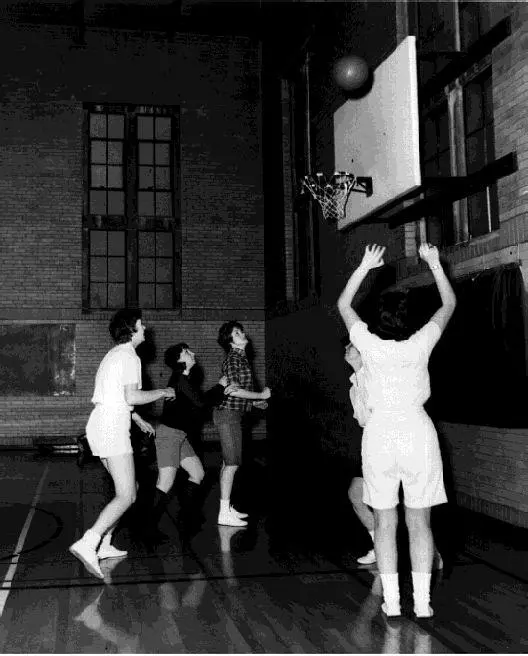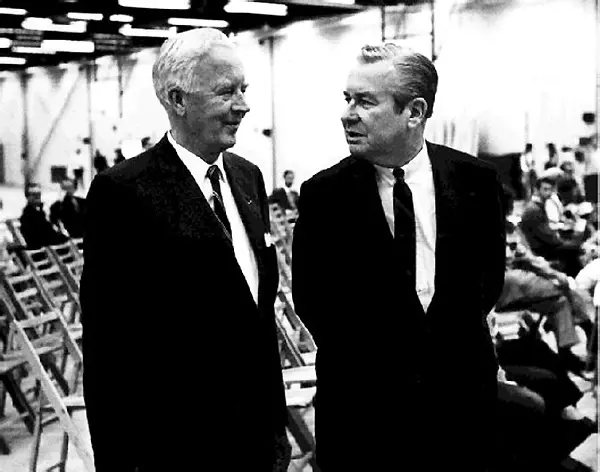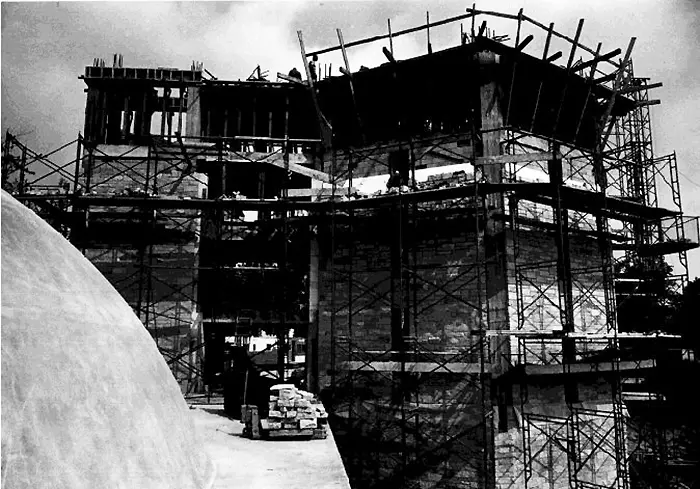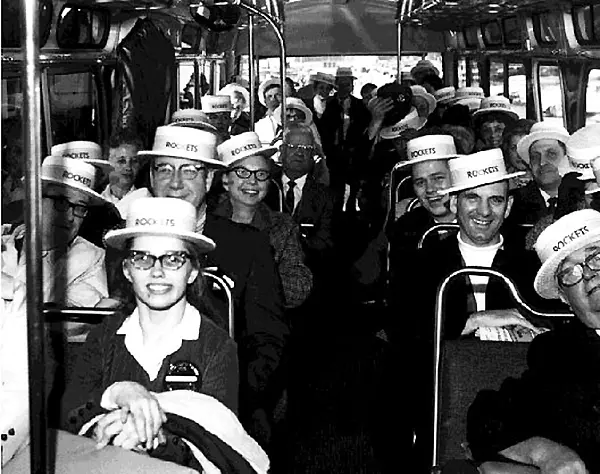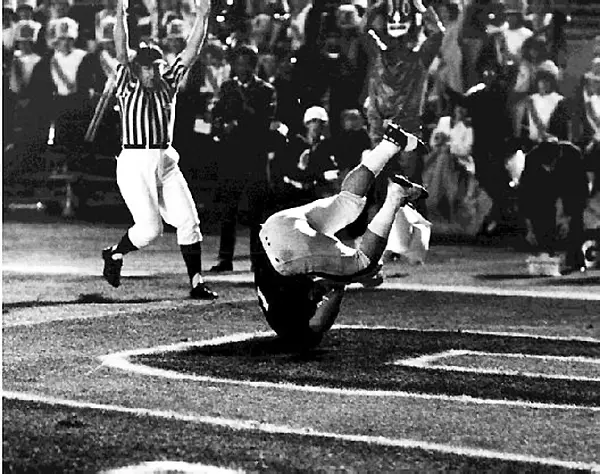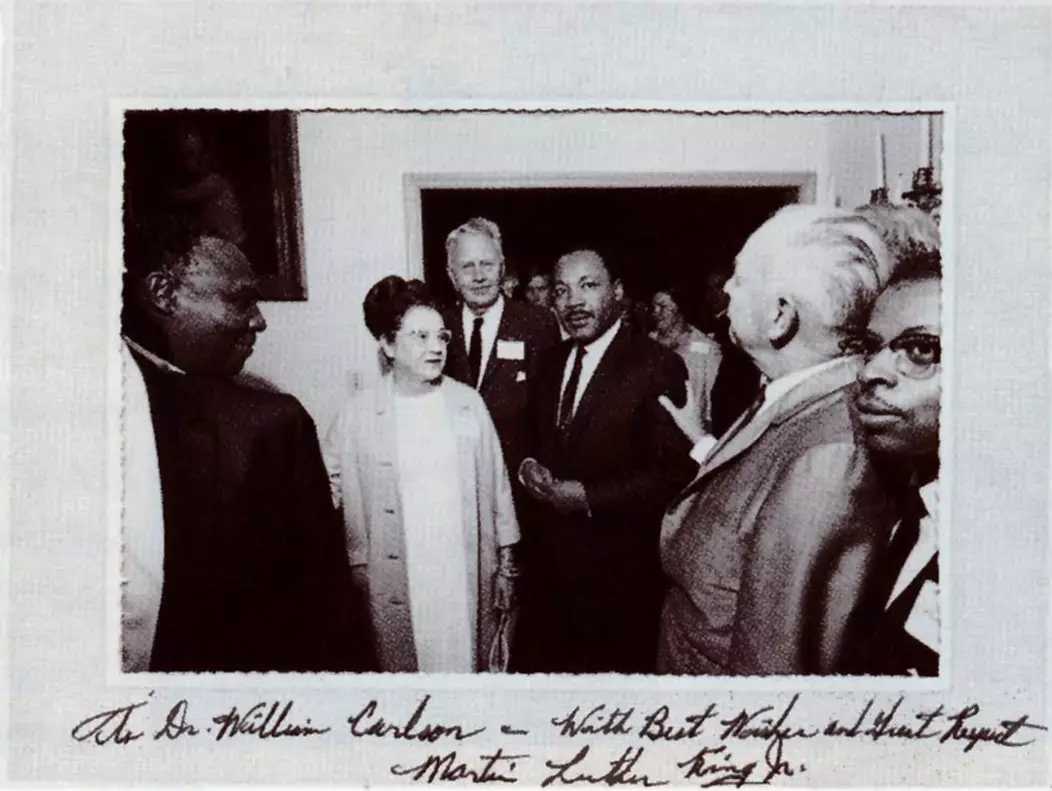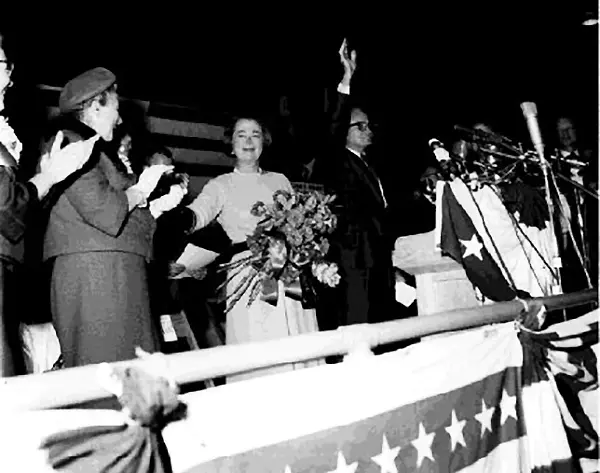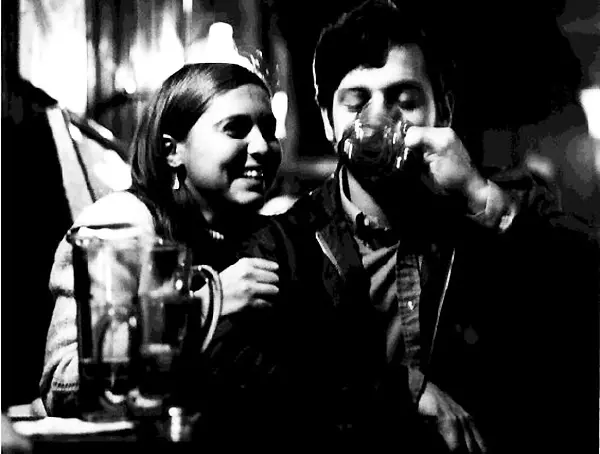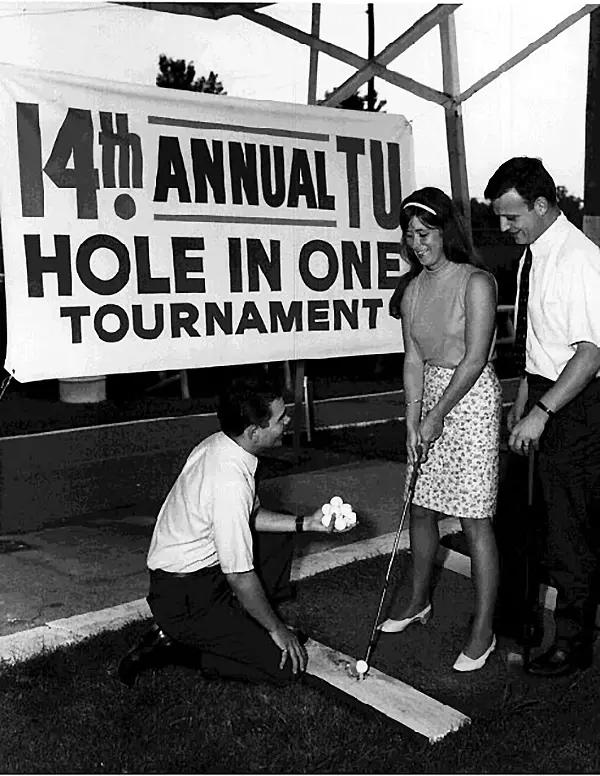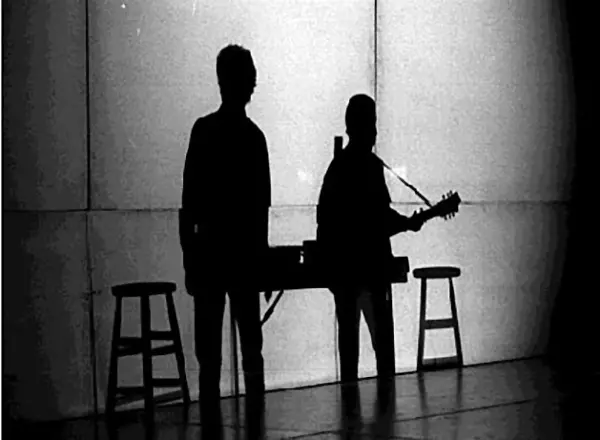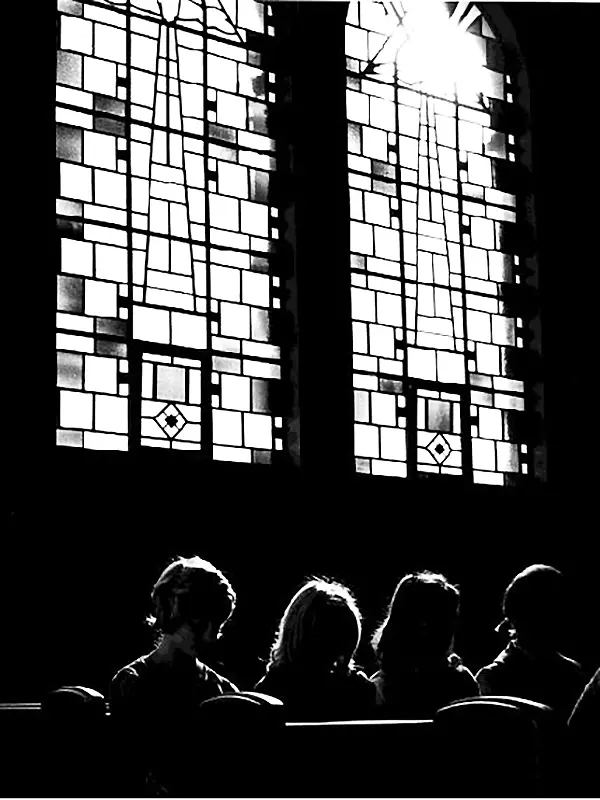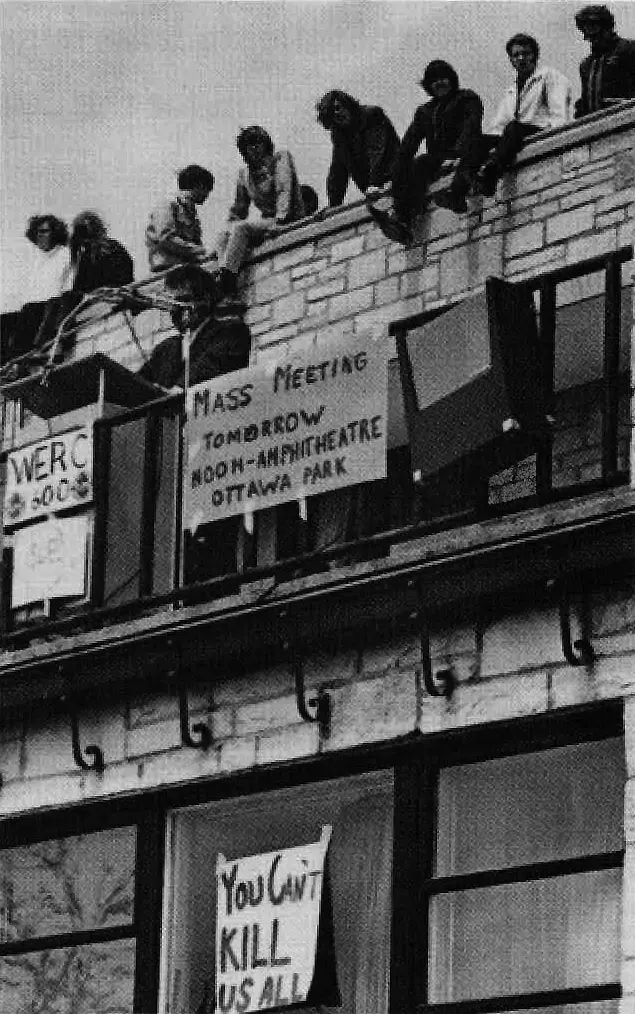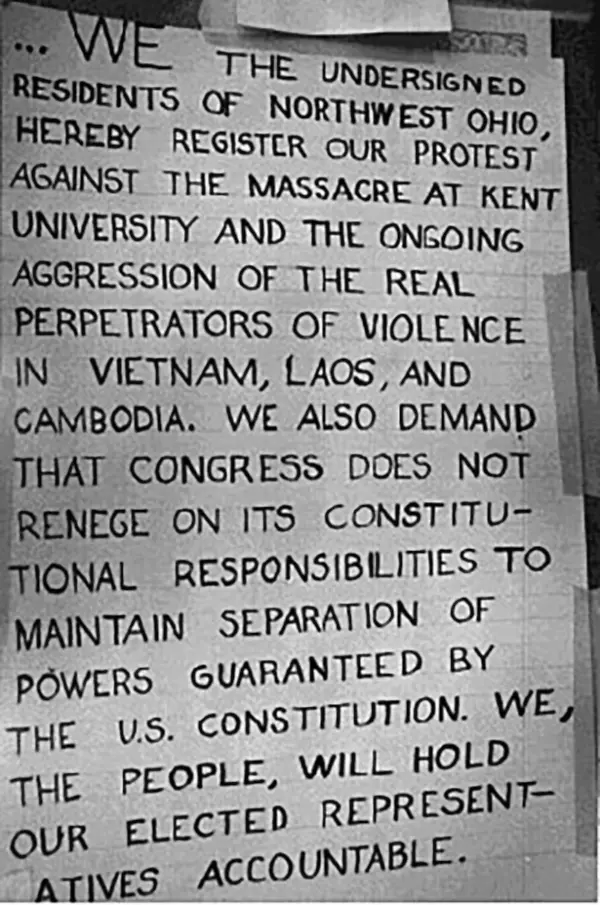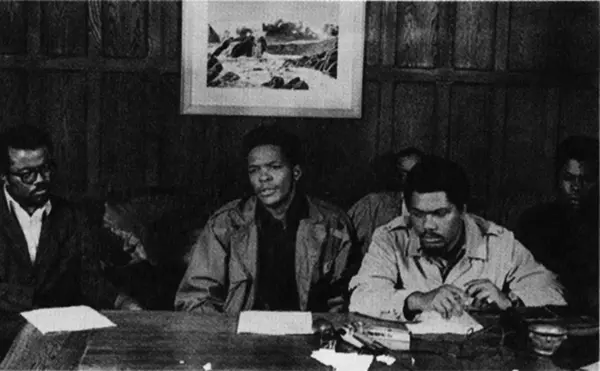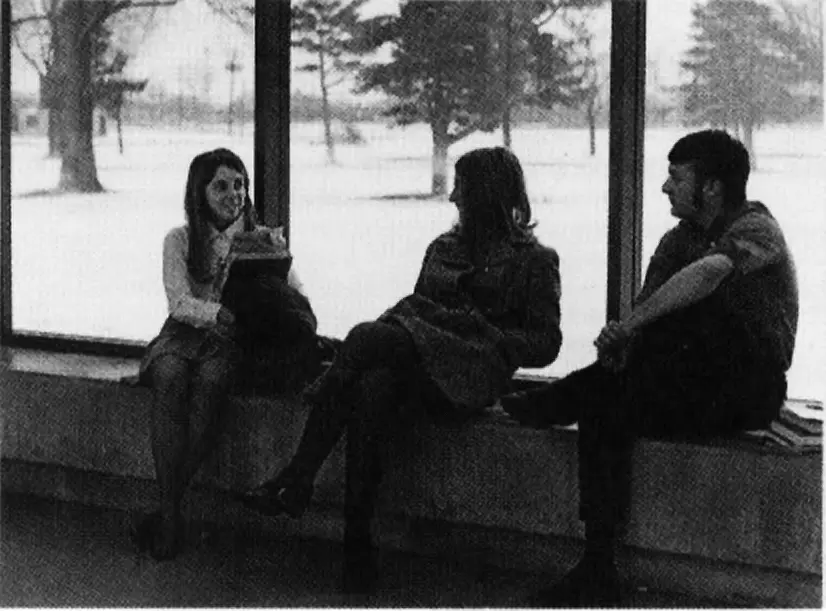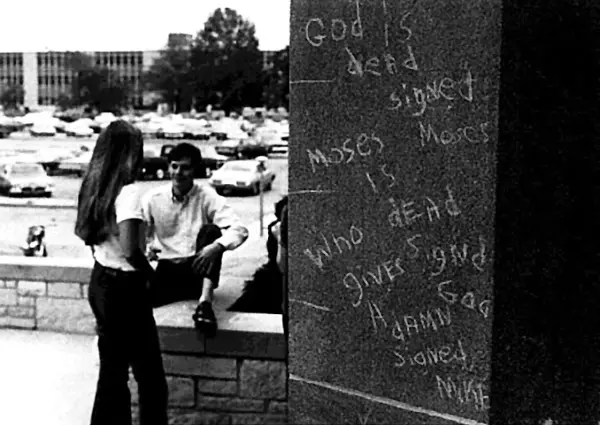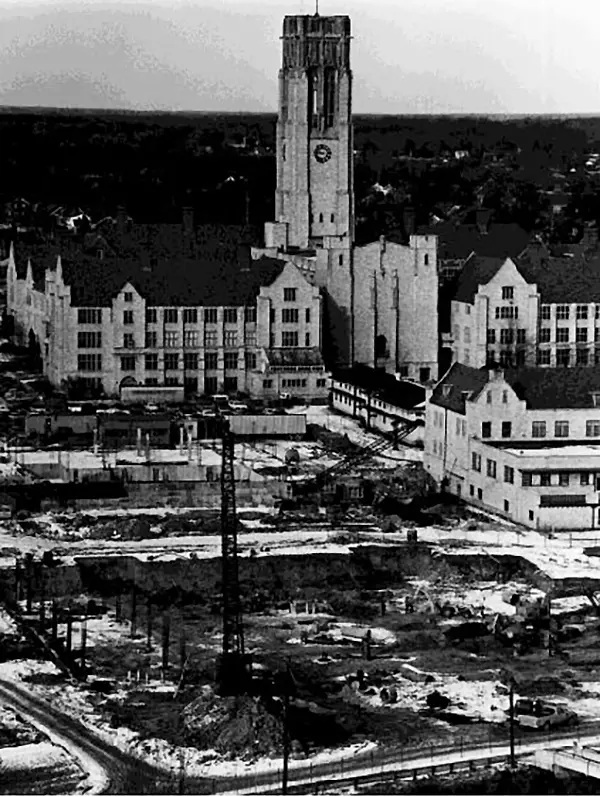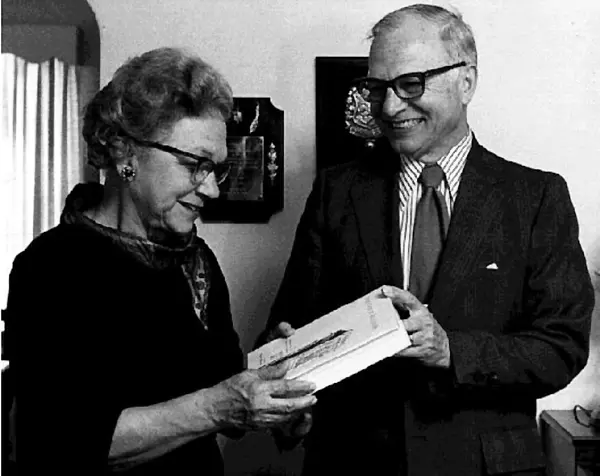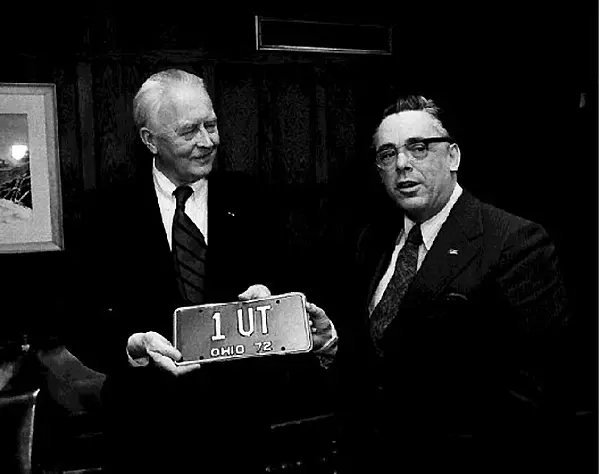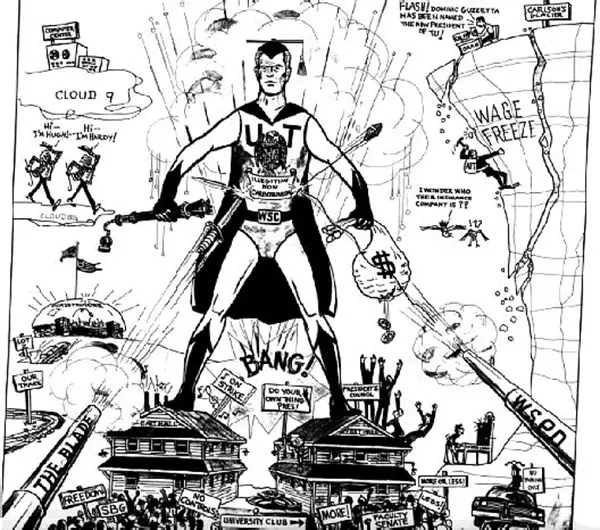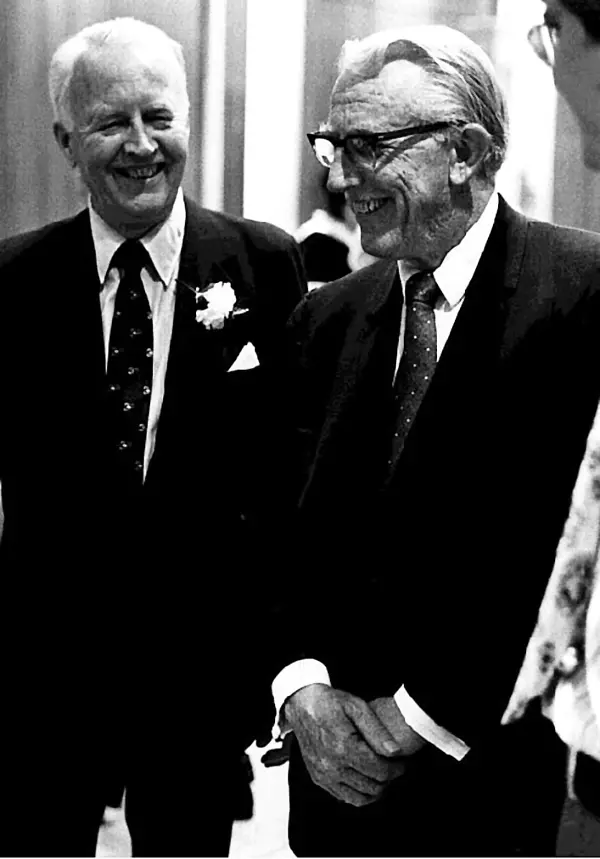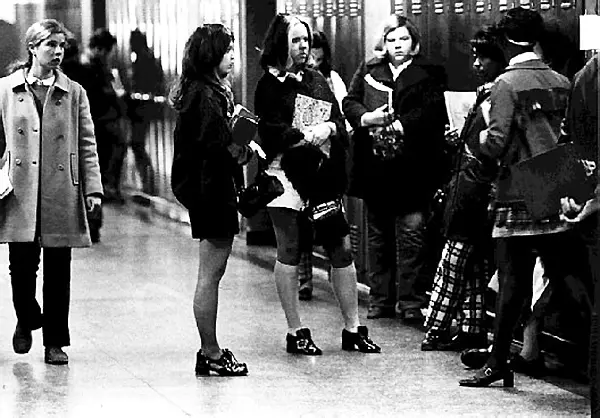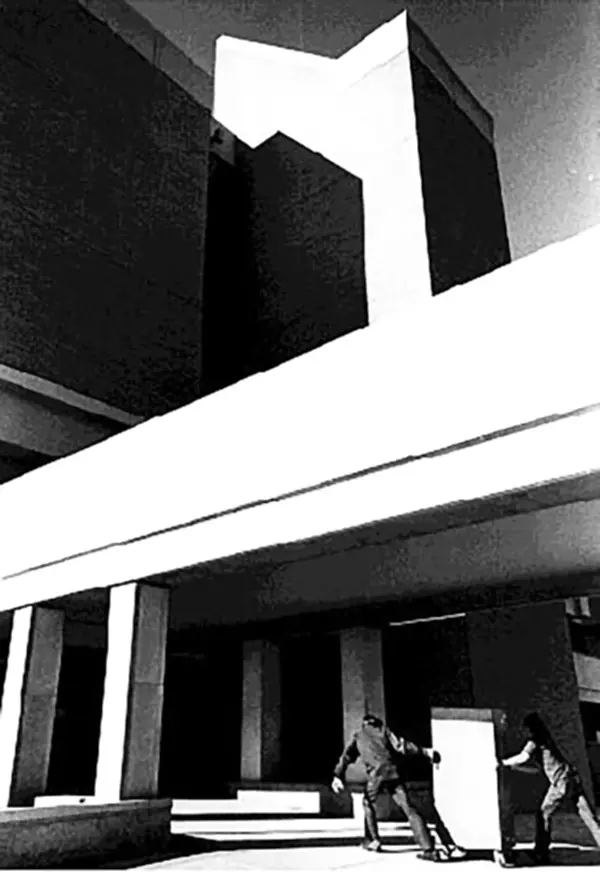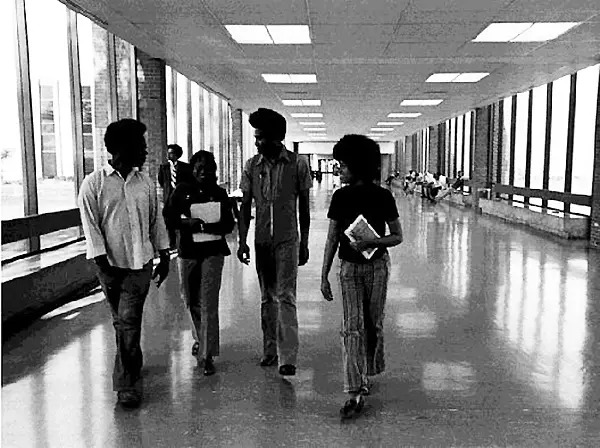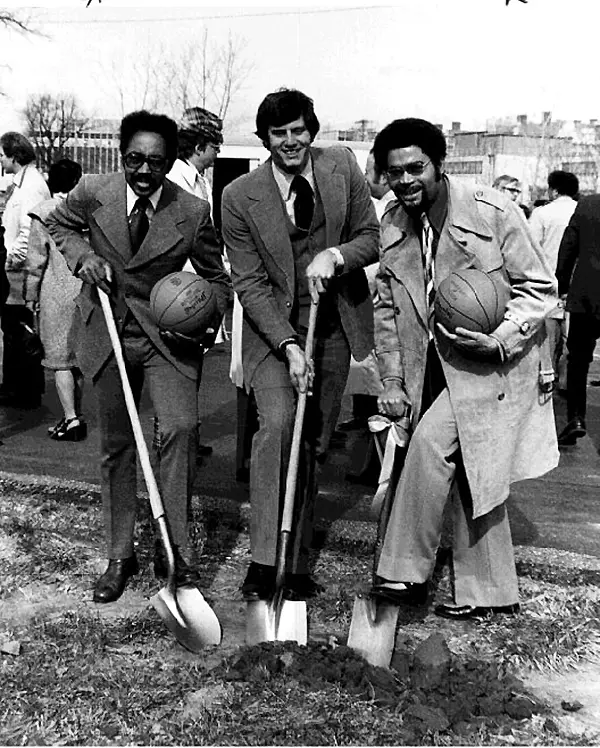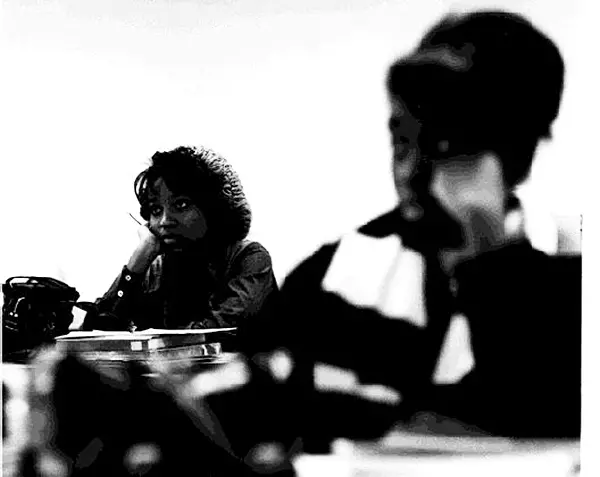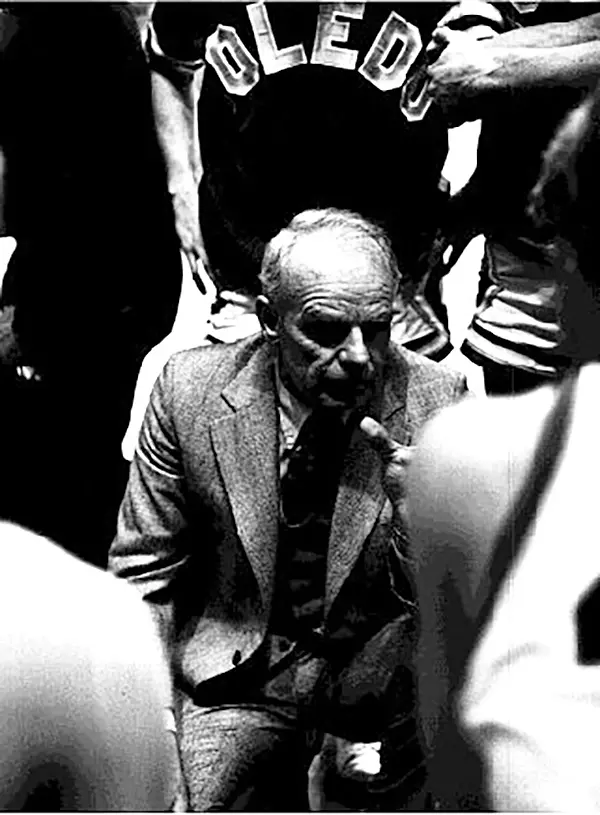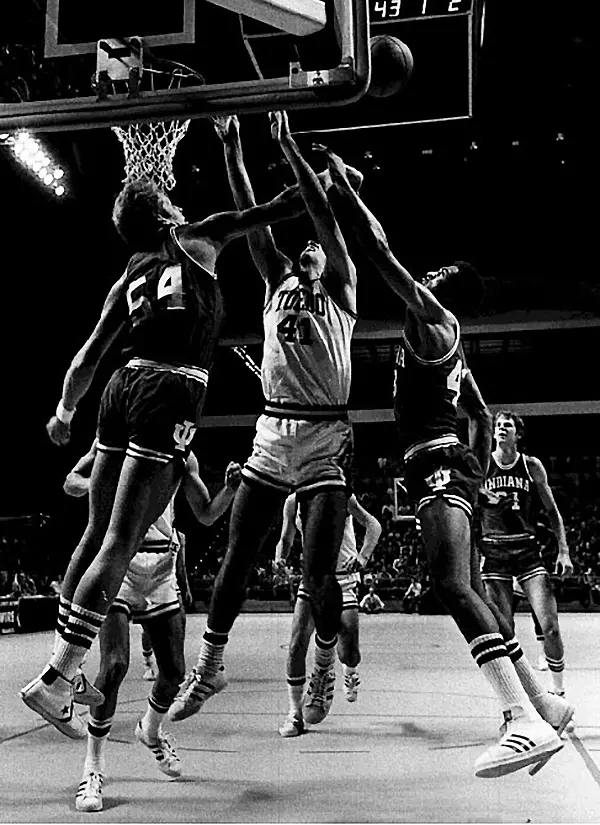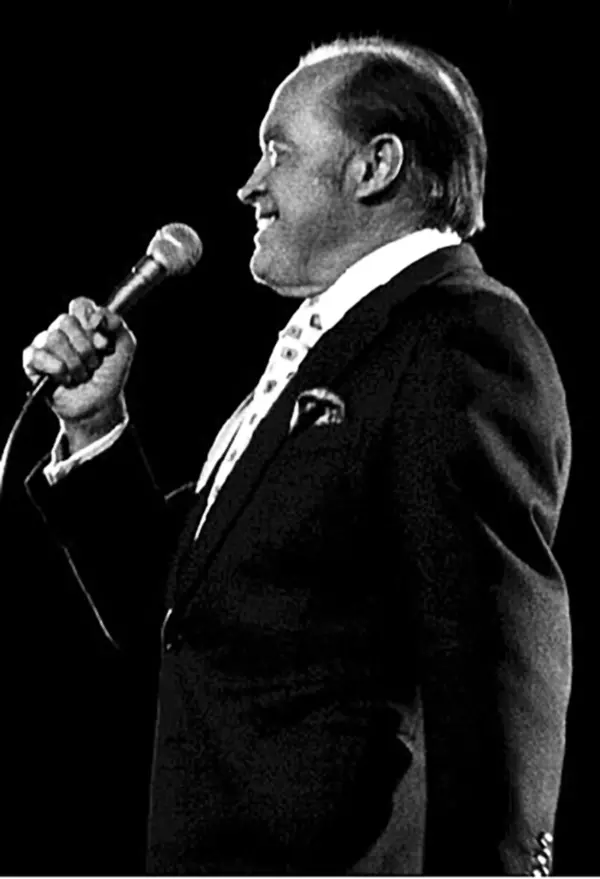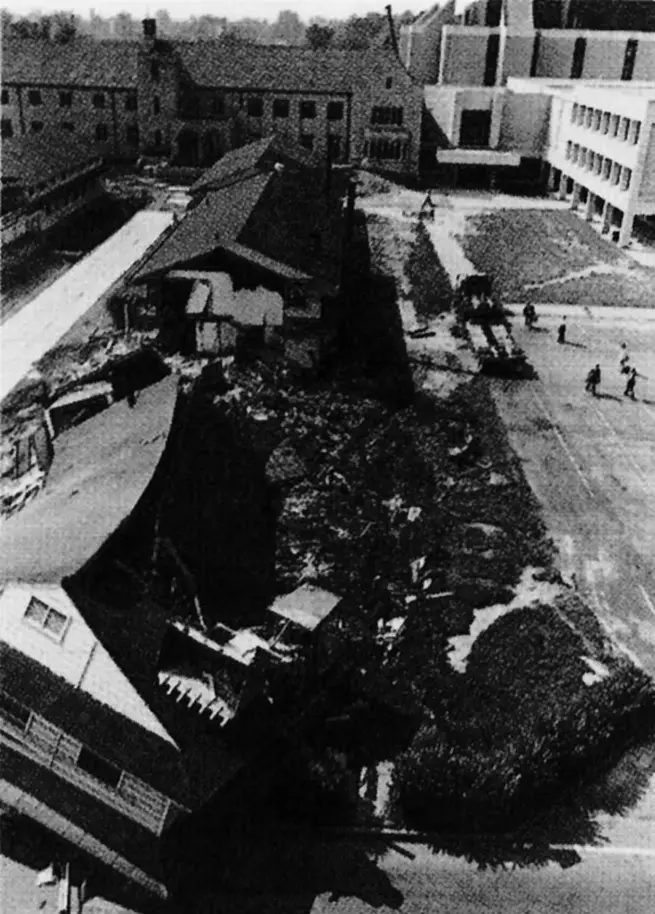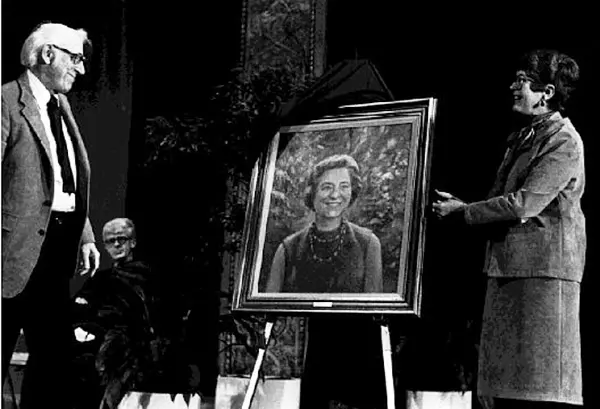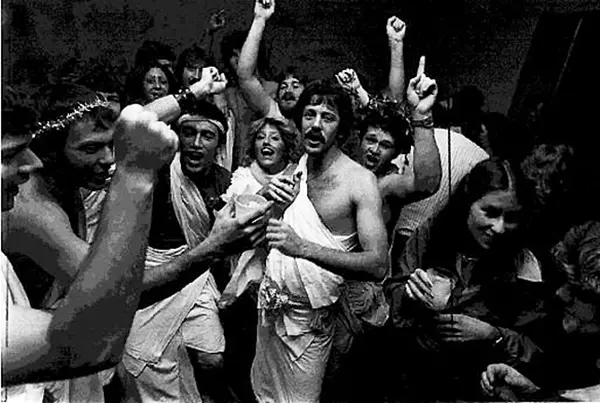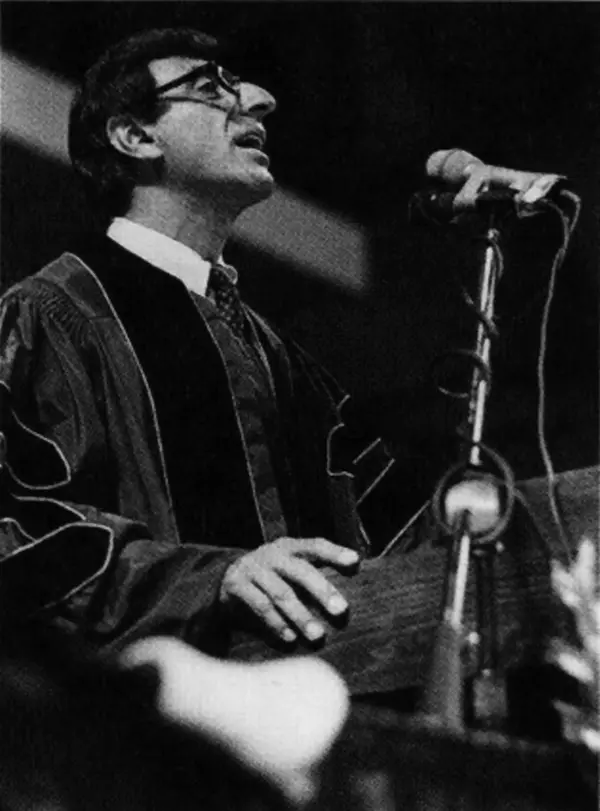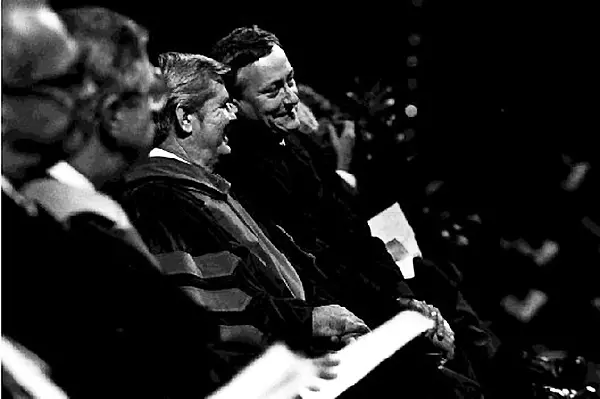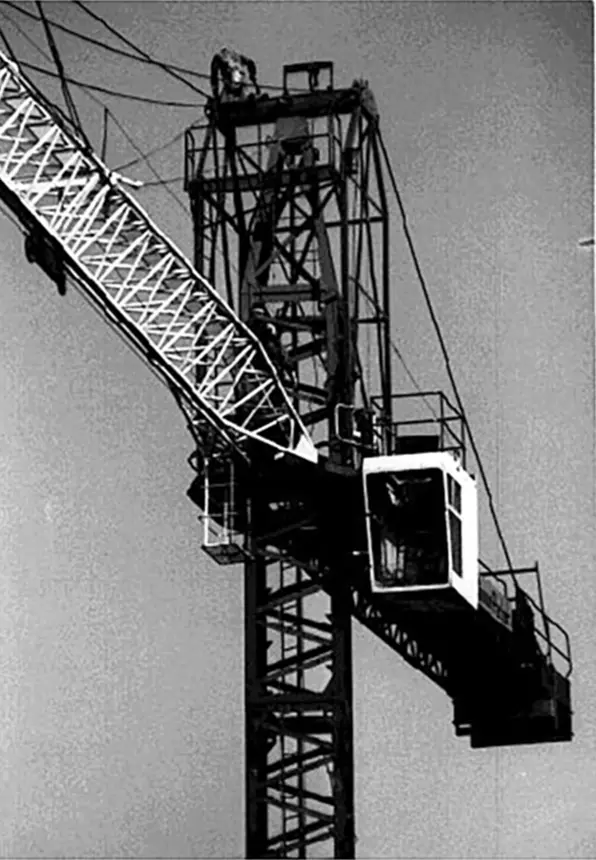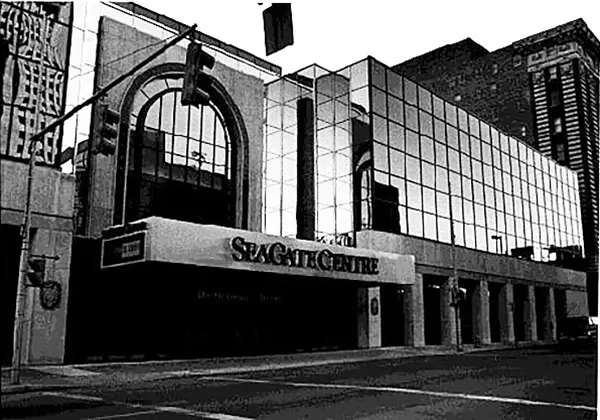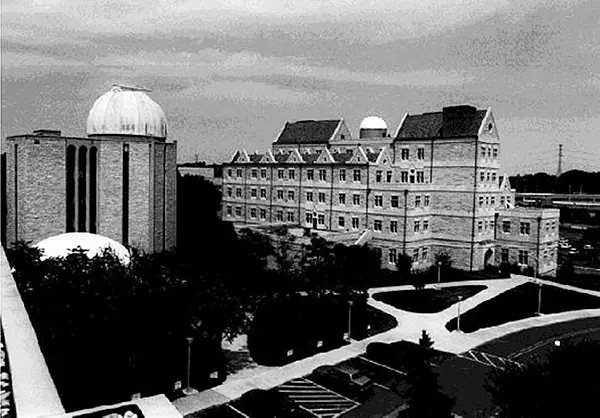Chapter 4. A Period of Change, 1960s-1980s
President William S. Carlson served as president from 1958-1972.
In January 1959, a special committee of Toledo City Council met with the University of Toledo’s new president, William S. Carlson, to discuss the future funding of the university. The university’s allocation was taking more and more of the city’s meager budget, and students were also being asked to pay a larger share. Toledo residents had two particular gripes. In addition to funding the municipal university with their tax dollars, they had to pay state taxes to support the state universities. They were also supporting students living outside the city limits who attended UT.
While many in City Council wanted to see the university turned over to the state, the university’s Board of Directors preferred state financial assistance and retaining UT’s independence. Three bills introduced into the state legislature in 1959 proposed a per-student subsidy for the state’s three largest municipal universities: Akron, Cincinnati, and Toledo. The bills stalled in the face of opposition from presidents of the state institutions who felt any funding for the municipal universities would come from their pockets.
The financial crisis worsened. Tuition was increased again and salaries frozen. City Council agreed to place a 2-mill levy on the ballot on October 6, 1959, to raise $1.7 million a year for the university. UT launched a vigorous campaign in support of the levy, and it passed by just 144 votes.
The new Student Union under construction. The building was completed in 1959.
The UT Dancing Rockettes, the first collegiate dance team in the country, was organized by Sports Information Director Max Gerber in 1961 and modeled after the group by the same name that performed in Radio City Music Hall.
With finances settled for a time, Dr. Carlson turned his attention to improving the academic standards of the university. He added research and scholarship to the job requirements of the faculty. In 1962 an honors program was instituted, and the first Ph.D. was awarded that year. The university bought several new parcels of land, adding access from Secor Road and space for a new men’s dormitory. The National Defense Education Act, passed in 1958, granted colleges $9 from the federal government for every dollar raised locally for scholarships. To help in fundraising, the Alumni Association created the non-profit University of Toledo Alumni Foundation. A new home for the president was acquired as a gift, and another gift of $1.4 million from the estate of Walter and Grace Snyder was used for a new building for the College of Education.
The Engineering-Science building was constructed with city and private funds in 1960.
Student socialize in the dormitory cafeteria, 1961 (left); An annual fundraising event was the Alumni Foundation's Phonathon, which started in 1962 (middle); Students stand in line in the Field House to register for classes in 1963 (right)
In 1963, UT urged voters to approve State Issue 1, which raised $250 million in capital improvement money for building projects at institutions of higher education (left); Freshmen students board busses for Freshman Camp, 1963 (middle); Mrs . Arthur Zepf, vice chair of the UT Board of Directors, places a time capsule in the cornerstone at the dedication of Snyder Memorial, April 22, 1964 (right).
Not all of President Carlson’s plans succeeded, however. The city’s mayor, Michael Damas, began a campaign in 1961 to land a new state medical college in Toledo. A consultant’s report suggested that the institution should be built in association with, and on the campus of, the University of Toledo. But this plan was dealt a blow when former Toledoan Michael DiSalle lost his re-election bid for governor to James Rhodes. Rhodes abolished the commission responsible for higher education planning (which had viewed Toledo’s plan favorably) and created a new agency, the Ohio Board of Regents. Several critical miscommunications with the state and pressure from The Blade and its publisher, Paul Block, Jr., led the trustees of the medical college to select the site of the former state hospital for the institution rather than a site on the UT campus. Furthermore, the Medical College of Ohio at Toledo was established as an independent state university.
Plans for the proposed medical center for The University of Toledo, 1964. The buildings were never constructed. Instead, the Medical College of Ohio at Toledo was created as an independent state university on the grounds of the old state hospital on Arlington Avenue.
Another unsuccessful effort by Dr. Carlson concerned building a new home for the University Community and Technical College on the site of the Rossford Ordnance Depot. The depot was to be deactivated, and in 1962 Congressman Thomas Ludlow Ashley tried to negotiate a deal to sell the site to UT for the community college. The deal was blocked, however, by residents owning adjoining land parcels who opposed it. With this site unavailable, Dr. Carlson suggested building the new campus on Jesup Scott’s original land donation of 1872 at Nebraska and Parkside. The Toledo newspaper opposed the move because it was uncertain if this land was owned by the university or the city. The university took the matter of ownership to court and received clear title. With the help of additional tax money, construction began on a new Community and Technical College campus in 1967.
Construction progresses on buildings at the Community and Technical College campus located at Scott Park, 1969 [*]
The ACT group, as the three municipal universities of Akron, Cincinnati, and Toledo were known, continued to press the state for financial assistance. Governor Rhodes agreed in 1965 to provide a state subsidy of $200 per student (despite opposition by the state universities). This was the beginning of state assistance for the University of Toledo.
Ohio Governor James Rhodes spoke at the groundbreaking ceremony for a new chemistry and biology building (later Bowman-Oddy Laboratories), 1965.
On July 3 of that year, the Ohio General Assembly passed a bill providing for the most fundamental change in the university’s history. The bill incorporated the University of Toledo into the state’s system of higher education. UT’s Board of Directors unanimously endorsed the bill.
Women play basketball in the Field House women's gym, ca. 1965.
President Carlson confers with Ohio Governor James Rhodes before the ceremony marking the transition of The University of Toledo from a municipal institution to a state institution, 1967
Effective July 1, 1967, the University of Toledo became a state university. State funding relieved the city of the burden of supporting a growing university, and provided capital improvement funds for new buildings. On the day of the ceremony marking transfer of ownership, groundbreaking was held for the Health Education Center and an addition to the Engineering-Science Building. Ritter Planetarium and Observatory (1968), the Law Center (1972), and a new library (1973) were soon to follow. Two other proposed building projects never happened, however. A music hall and auditorium between University Hall and the Student Union was rejected because its architecture was too modern. A proposal to put a dome over the Glass Bowl to allow its use for both basketball and football was rejected because of criticism from The Blade and from the students. The Blade and its publisher wanted the university to build a new sports facility downtown as part of the city’s revitalization efforts. The students did not want to pay additional fees to cover the Glass Bowl’s renovation, estimated at $8.5 million. The plan was dropped, and the stadium’s renovation was delayed until 1990.
The construction of Ritter Planetarium and Observatory, 1967 (left); Fans of the football team travel to Florida by bus to see the team play in the Tangerine Bowl in 1969 (middle); Dick Seymour scores a touchdown in the Tangerine Bowl of 1969. Between 1969 and 1972, the UT football team scored 35 consecutive victories, the second longest winning streak in modem major collegiate football history (right)
Becoming a state university also produced administrative changes. The governing board, now called trustees, was appointed by the governor. To help administer the expanding institution, Dr. Carlson appointed a new group of vice presidents. And in 1968, the university was required to change from semesters to quarters in order to conform to the calendars of the other state universities.
President William S. Carlson met civil rights leader Dr. Martin Luther King Jr. at a reception in Toledo, 1967.
Inspired by the election of President John F. Kennedy, college students in the 1960s awakened from the “Silent Generation” of political apathy. The Civil Rights movement led many to protest segregation and volunteer as “Freedom Riders.” But it was the Free Speech Movement that began at Berkeley, California, in 1964 that influenced a decade of student protests, including many at the University of Toledo.
Republican Presidential candidate Barry Goldwater tried to address the students in the Field House in 1964, but was drowned out by supporters of opponent Lyndon Johnson.
UT officials were embarrassed in October 1964 when Republican presidential candidate Barry Goldwater tried to speak at the Field House and was drowned out by supporters of Democrat Lyndon Johnson. The event received national press coverage. On May 5, 1966, local members of the Students for a Democratic Society protested the military draft outside Dana Auditorium where male students were testing to qualify for draft deferments. A few days later, SDS members disrupted a ROTC Honors Day review. To avoid more protests, a committee of faculty and students produced the Joint Statement of Rights and Freedoms of Students as the basic policy governing student privileges. After the policy was approved by the Board of Trustees, students were given representation on committees that allocated student funds.
Students relax after class in a traditional way, ca. 1967.
The Alumni Association's popular Hole in One Tournament helped to raise thousands of dollars for UT scholarships. This is a photograph of the 1968 event.
Simon and Garfunkel appearing in concert in the Field House, 1968. (Photo by Bill Hartough.)
The protests by UT students were peaceful compared to other universities. Theater students waged a sit-in in May 1967 to protest the allocation of space in Doermann Theater to the Student Records Office. In April 1968, dormitory students started a “food riot” over the quality of food served to them. Students opposed to the war in Vietnam again disrupted the ROTC Awards Day ceremony on May 7, 1969, and this time four were arrested. The following week a group confronted President Carlson and demanded that ROTC be abolished on campus, and several students stormed his office a few days later. One student was arrested for this action. On October 15, 1969, over a thousand UT students and faculty participated in the national Vietnam moratorium by marching from campus to Gesu Church for memorial services for the war dead.
Some of over 1000 UT students who participated in the national Vietnam War moratorium observance, October 15, 1969. (Photo by Bill Hartough.)
Student protests reached a crisis stage on May 4, 1970, when members of the Ohio National Guard killed four students protesting the Vietnam War at Kent State University. That afternoon, the UT Student Senate met and requested a moratorium on classes as a memorial to the slain students and to provide time for students to hold workshops to discuss the event. The next afternoon, newspaper columnist Carl Rowan, who had been scheduled to speak as part of the University Convocations series, spoke outside at a large rally, where he was joined by several student leaders and Dr. Carlson. The Faculty Senate passed a resolution deploring the violence at Kent State and asked that the moratorium be continued for the rest of the week. The week ended with a candlelight procession, and the campus remained peaceful.
One of the UT student rallies held fallowing the events at Kent State, 1970.
A petition signed by thousands of UT students expressed outrage at the violence at Kent State University and the Vietnam War, 1970
However, tensions rose again on May 15 when a shooting at Jackson State University in Mississippi killed two black students. To protest what the students felt was a lack of sympathy by Dr. Carlson for the death of these students, black students blocked the entrance to University Hall on Monday, May 18. President Carlson met with a group of these students, and agreed to hire more black faculty and graduate assistants and start a Black Studies program.
Black student leaders met in President Carlson's office following the death of two students at Jackson State University in Mississippi. Talks between the students and Dr. Carlson ended a blockade of University Hall, May 18, 1970.
The events of the first few weeks in May 1970 ended peacefully with a student referendum on May 20-21. An overwhelming majority favored returning to normal business. They also asked that the Army Reserve be removed from campus (but favored ROTC remaining), and asked that a letter be sent to President Richard Nixon stating their views on the war in Vietnam.
Students at the Community and Technical College, ca. 1970.
UT students, like those at many universities at the end of a violent decade, expressed cynicism about political events. This photograph was taken in 1971. (Photo by Bill Hartough)
Immediately after the Kent State shooting, Governor James Rhodes set up a series of committees to study the issue of campus unrest in Ohio. Among the outcomes of this commission was the request for a code of conduct for students and faculty at state universities and improvements in campus security.
Progress is made on both William S. Carlson Library and the addition to the Student Union, 1971.
UT marked its centennial in 1972 with a year of celebrations. Ohio license plates were issued in blue and gold to commemorate the event. Plans were made for a major capital campaign called the Centennial Fund Drive to serve as a lasting legacy to the year. Dr. Carlson received an honorary degree at a formal convocation in the Field House. And The Tower Builders: The Centennial History of The University of Toledo, by Frank R. Hickerson, was published.
Mrs. Frank Hickerson is presented with a copy of The Tower Builders, a history of UT published as part of its centennial and written by her late husband, Jesse Long.
Dr. Carlson receives his blue and gold Ohio license plate commemorating UT's centennial from Donald Curry, 1972.
Dr. Carlson received this card on his birthday in 1971. The drawing, by Thomas Durnford, depicted many of the events that occurred during Dr. Carlson's tenure, and was inscribed with "Happy Birthday-Super President" on the back.
President Carlson announced his intention to retire in 1972. Dr. Glen R. Driscoll, chancellor of the University of Missouri-St. Louis, was selected as his successor. Dr. Driscoll oversaw further expansion of the university’s physical plant with the additions to the Student Union (1972) and the Law Center (1978), and several new buildings including the Center for Performing Arts (1976), Centennial Hall (1976), the Center for Continuing Education (1978), and Stranahan Hall (1984). When Dr. Driscoll retired in 1985, the continuing education building was named for him. Plans were also made for a new downtown complex of classrooms and meeting rooms, part of downtown Toledo’s revitalization efforts. Construction began on UT’s SeaGate Centre campus in 1985.
In 1972, William Carlson retired from the presidency of UT and was replaced by Dr. Glen R. Driscoll.
The late 1970s saw the university undertake its most important beautification project, Centennial Mall. Traffic was diverted from the middle of campus, and the parking lots and army barracks between University Hall and the Student Union were demolished. These eye-sores were replaced with a 9-acre landscaped mall which was dedicated as part of the Homecoming festivities in 1980. In 1981, the university celebrated 50 years of the Bancroft Street campus.
Scenes of student life, ca. 1972 (left); Movers help transfer the library's holdings into the new William S. Carlson Library building, 1973 (middle); Scenes of student life, ca. 1973.
Rocket basketball greats Ralph Lewis ( 1960- 1962), Steve Mix ( 1967-1969), and Ray Wolford ( 1962-1964) help break ground for Centennial Hall, 1975 (left); Scenes of student life, ca. 1975 (middle); Bob Nichols, the most successful basketball coach in the history of the Mid-American Conference, who coached the UT team for 22 years beginning in 1965. He led the basketball team to conference championships in 1966-67, 1971-72, 1978-79, 1979-80, and 1980-81 (right)
The inaugural game of Centennial Hall (now Savage Hall) in 1976 when UT beat the basketball powerhouse Indiana University by a score of 59 to 57, ending Indiana's 33-game winning streak (left); A Performance by Bob Hope marked the opening of Centennial Hall, 1976 (middle); In 1979, the parking lots and old Army barracks that occupied the center of campus were tom down to make room for Centennial Mall (right).
The 1980s were a time of record enrollment growth. Between 1979 and 1989, UT was the fastest growing state university in Ohio, with the student population increasing from 18,000 to over 24,000. These enrollment gains were made in spite of periodic economic recessions that hit northwest Ohio particularly hard.
The Catharine S. Eberly Center for Women was dedicated on Dec. 7, 1980, in honor of the late Board of Trustees member. President Glen Driscoll (left) and trustee Lois Kennedy (right).
Because UT was located in an urban setting, Dr. Driscoll sought to develop ways that the university could contribute to its surrounding community. He founded the Urban Affairs Center, the Management Center, and the Catharine S. Eberly Center for Women in an effort to serve the government, businesses, and needy populations of northwest Ohio. The community gave back to the university too with an increase in private giving which placed UT in the top 100 public universities in the nation for fundraising.
A fraternity "Toga" party, ca. 1980, popularized by the movie "Animal House."
In 1983, former Toledoan Jamie Farr received an honorary degree from UT.
In March 1984, Dr. Driscoll announced that he would retire the following spring. Dr. James D. McComas, president of Mississippi State University, was selected to replace Dr. Driscoll following a national search. He was formally inaugurated at a ceremony in October 1985.
President James D. McComas and Ohio Governor Richard Celeste confer at President McComas's inauguration ceremony, 1985.
Dr. McComas continued the expansion of the university’s facilities. McMaster Hall (1987) was completed, and plans were made for the Student Recreation Center (1990), the Larimer Athletic Complex (1990), the Greek Village (1990), and renovations to the Glass Bowl Stadium (1990) during his tenure. The university purchased land from Owens-Illinois for a new building for the College of Engineering. A new master plan unveiled in March 1987 provided guidance for future campus development. Some of the building projects were controversial, however, especially among the faculty. The university sold bonds to cover the cost of many of the projects, and some faculty expressed concern about the burden of the debt on the future of the institution.
Work progresses on Stranahan Hall, 1984. (Photo by Bill Hartough.)
The university expanded its programming to a third campus located downtown at SeaGate Centre, 1987. (Photo by Liz Brandt.).
In addition to new buildings, Dr. McComas tried to improve relations between the university and the community by promoting UT in the press. To stress academic excellence, Dr. McComas established the Presidential Scholars program, and began efforts to attract more National Merit Scholars. His tenure at UT was brief, however, as he resigned in 1988 to become president of Virginia Polytechnic University. John Stoepler, dean of the College of Law, was named interim president while the search began for a replacement.
McMaster Hall was dedicated in 1987 as the new home for UT's Physics and Astronomy Department. The building was named for Helen and Harold McMaster, who donated the funds to help complete the project.

